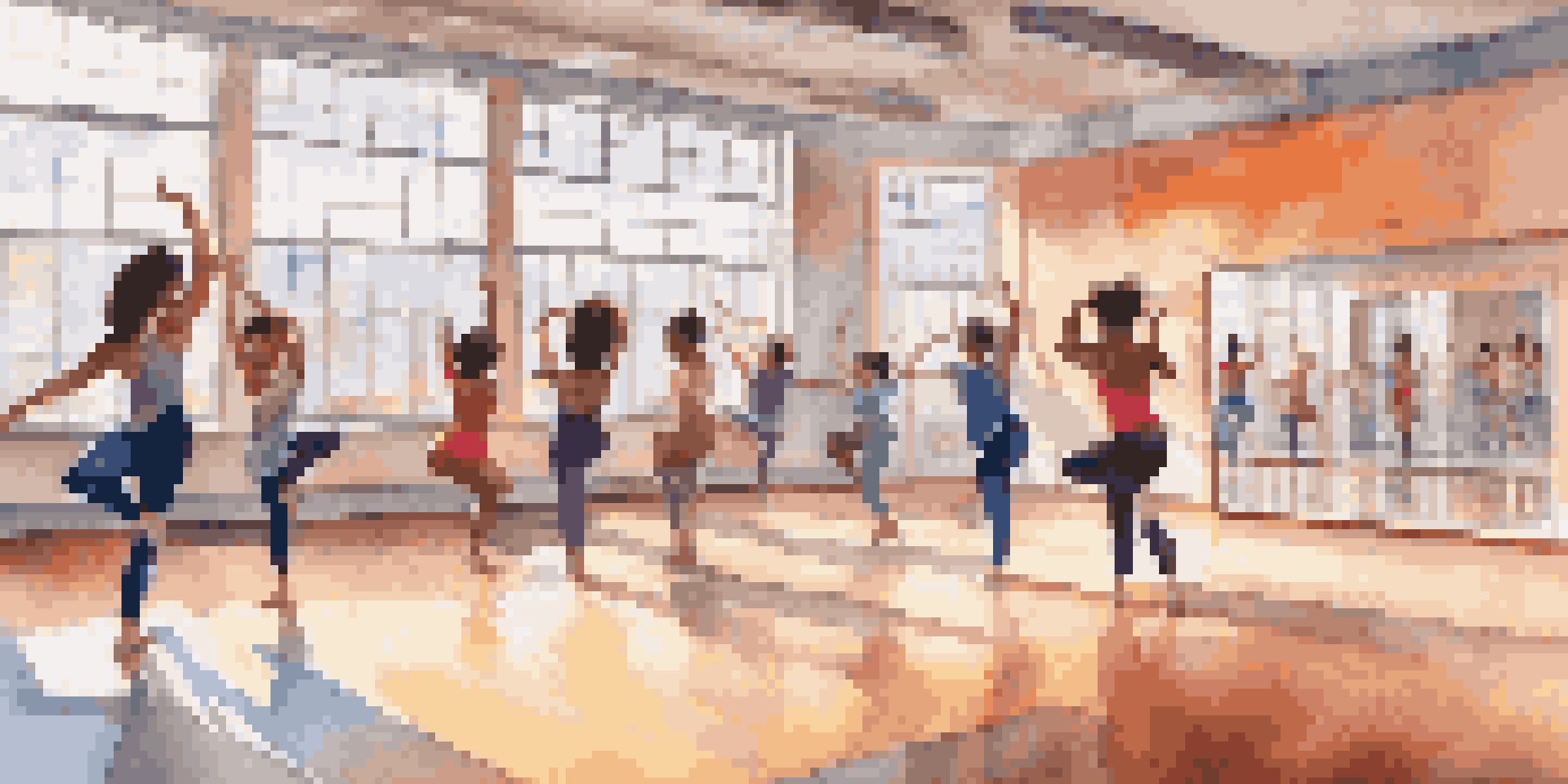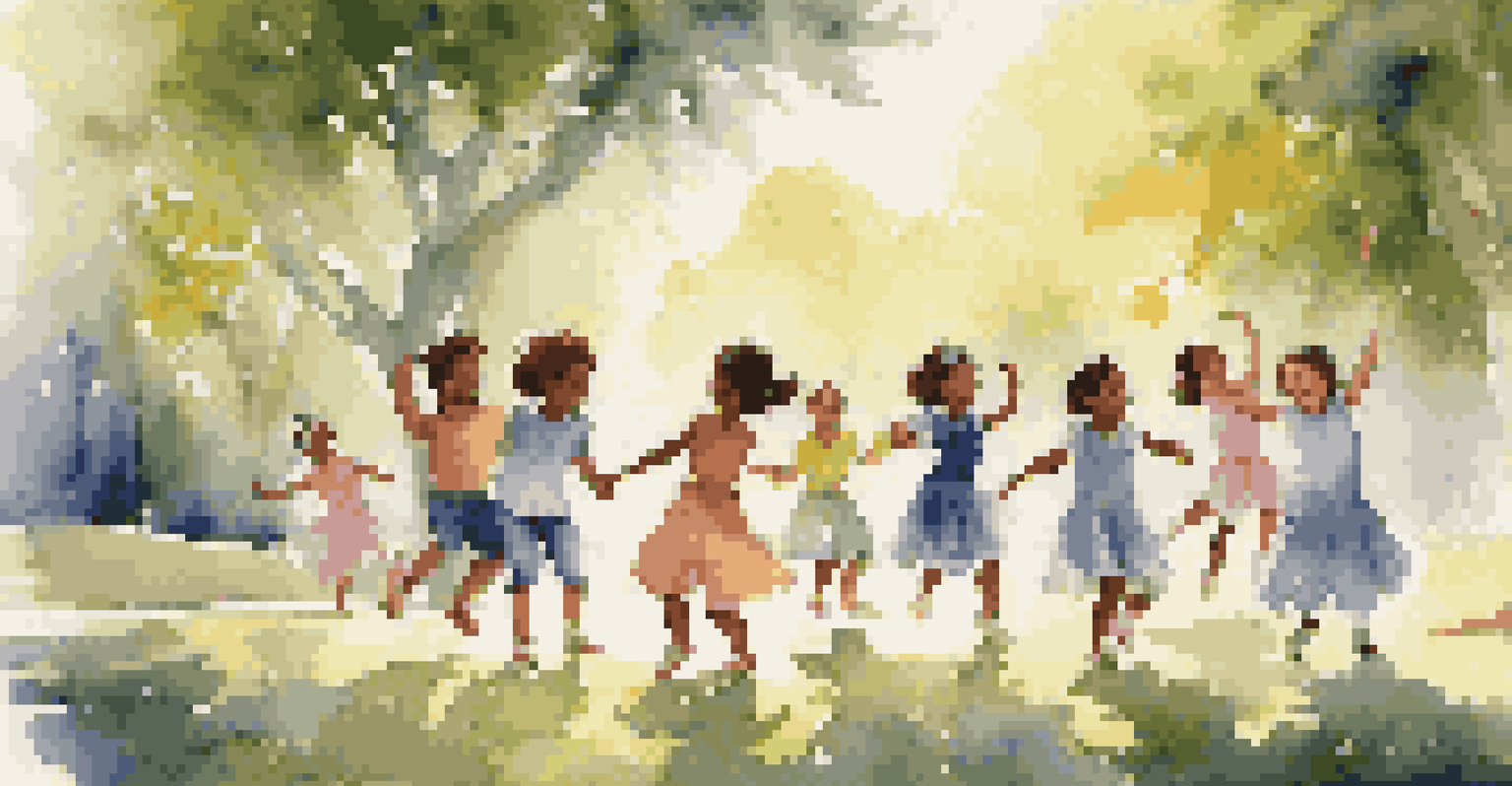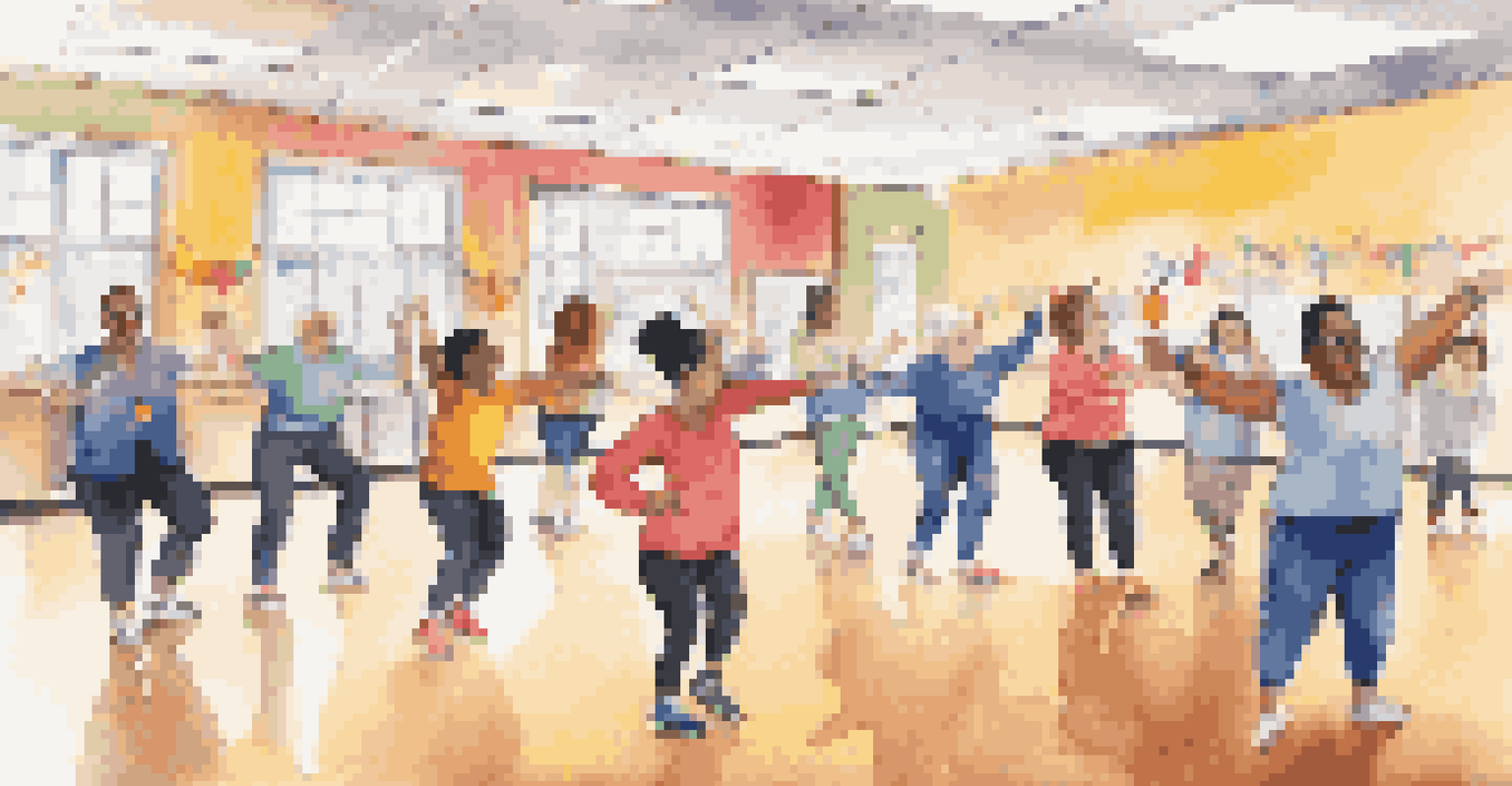Cross-Disciplinary Approaches to Dance Education in Schools

Understanding Cross-Disciplinary Learning in Dance
Cross-disciplinary learning combines knowledge and skills from different fields. In the context of dance education, this means integrating dance with subjects like math, science, and history. For instance, students can explore rhythm and patterns through math, making learning more relatable and engaging.
Dance is the hidden language of the soul.
By connecting dance with other disciplines, students not only enhance their dance skills but also develop a deeper understanding of the subjects involved. This approach encourages creativity, critical thinking, and problem-solving abilities. Imagine teaching geometry through the angles and shapes created in dance movements!
Moreover, this method fosters a collaborative learning environment. Students from various backgrounds and interests come together, enriching each other’s perspectives. As they share their insights, they learn to appreciate the interconnectedness of knowledge.
The Benefits of Integrating Arts and Academics
Integrating arts, such as dance, into academic curricula offers numerous benefits for students. Research has shown that students who participate in dance education often exhibit improved focus and enhanced memory retention. This is because engaging in physical activity stimulates brain function and promotes a positive learning atmosphere.

Additionally, dance education can increase students' confidence and self-esteem. When they perform in front of peers or showcase their work, they learn to express themselves and feel proud of their achievements. This emotional growth is crucial for their overall development.
Dance Enhances Learning Across Subjects
Integrating dance with subjects like math and science fosters creativity and critical thinking in students.
Finally, blending dance with academic subjects encourages a holistic approach to education. Students learn to see the value of creativity in problem-solving and apply these skills in real-world situations. This preparation is essential for their future careers, no matter what path they choose.
Implementing Dance in STEM Education
STEM education—science, technology, engineering, and math—can greatly benefit from incorporating dance. For example, students can explore physics concepts through the movements of dance, such as force, motion, and energy. This hands-on experience helps solidify their understanding of complex theories.
Education is the most powerful weapon which you can use to change the world.
In addition, technology plays a significant role in modern dance education. Tools like video analysis software allow students to study and improve their techniques. By merging technology with dance, students become more adept at using tools that are increasingly important in today’s digital world.
Furthermore, integrating dance into STEM encourages critical thinking and innovation. Students are challenged to design their own dance routines based on scientific principles, leading to exciting discoveries and creative solutions. This kind of interdisciplinary project can spark a lifelong passion for both dance and science.
Enhancing Language Arts Through Dance
Dance education can also enrich language arts by helping students express emotions and narratives through movement. When students create a dance based on a story or poem, they learn to interpret and communicate ideas in new ways. This process fosters a deeper understanding of literary elements.
Moreover, discussing dance encourages students to enhance their vocabulary. As they describe movements and emotions, they learn new words and phrases, which can improve their writing and speaking skills. This dual approach combines physical activity with intellectual growth.
Dance Boosts Emotional Intelligence
Through movement and collaboration, dance education cultivates emotional awareness and empathy among students.
Incorporating dance into language arts also promotes collaboration among students. They can work together to choreograph pieces based on themes from literature, learning to appreciate teamwork and different perspectives. This enhances their communication skills and prepares them for future collaborative projects.
Promoting Social Studies Through Dance
Dance education can serve as a powerful tool for exploring cultural history and social studies. By studying traditional dances from various cultures, students gain insights into the values, beliefs, and histories of different communities. This not only broadens their understanding of the world but also fosters respect for diversity.
In addition, creating dances that reflect historical events allows students to embody and express what they learn. For instance, choreographing a dance about a significant historical moment helps students connect emotionally with the subject matter. This experiential learning makes history come alive in a memorable way.
Furthermore, dance projects can spark discussions about social issues. Students can use dance as a medium to express their views on topics like equality, justice, and community. This empowers them to engage in meaningful conversations and become more informed citizens.
Fostering Emotional Intelligence Through Dance
Dance education is a fantastic way to cultivate emotional intelligence among students. Through movement, they learn to recognize and express their feelings, which is essential for personal growth. This awareness can lead to improved relationships with peers and teachers.
Moreover, dance encourages empathy as students work together in groups. They must learn to understand each other's perspectives and collaborate effectively. This teamwork not only enhances their dance skills but also nurtures social and emotional development.
Inclusive Dance Programs Build Community
Creating adaptive and culturally diverse dance classes ensures all students feel valued and promotes a sense of belonging.
Additionally, exploring themes of emotion in dance can help students process their feelings. They can channel their experiences into choreography, which can be therapeutic. This emotional outlet is particularly beneficial for young people navigating the challenges of growing up.
Creating Inclusive Dance Education Environments
An essential aspect of cross-disciplinary approaches to dance education is fostering inclusivity. Schools should strive to create environments where all students feel welcomed and valued, regardless of their backgrounds or abilities. Inclusive dance programs allow everyone to participate and thrive.
For instance, adaptive dance classes can be designed for students with disabilities, ensuring they have equal opportunities to express themselves. These classes not only promote physical activity but also build a sense of community and belonging among participants.

Moreover, celebrating diverse dance forms from various cultures enriches the curriculum. This exposure broadens students' horizons and encourages them to appreciate different artistic expressions. Ultimately, an inclusive approach nurtures creativity and collaboration in the classroom.